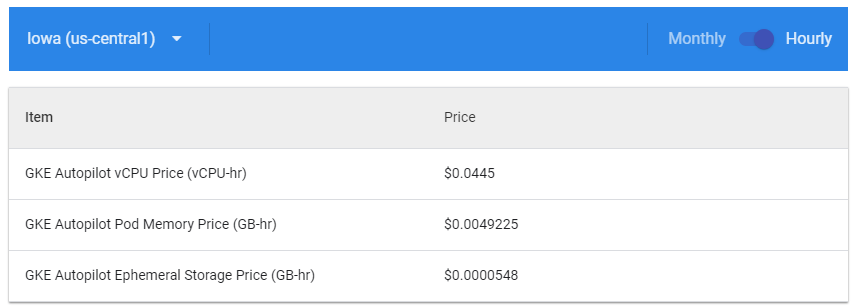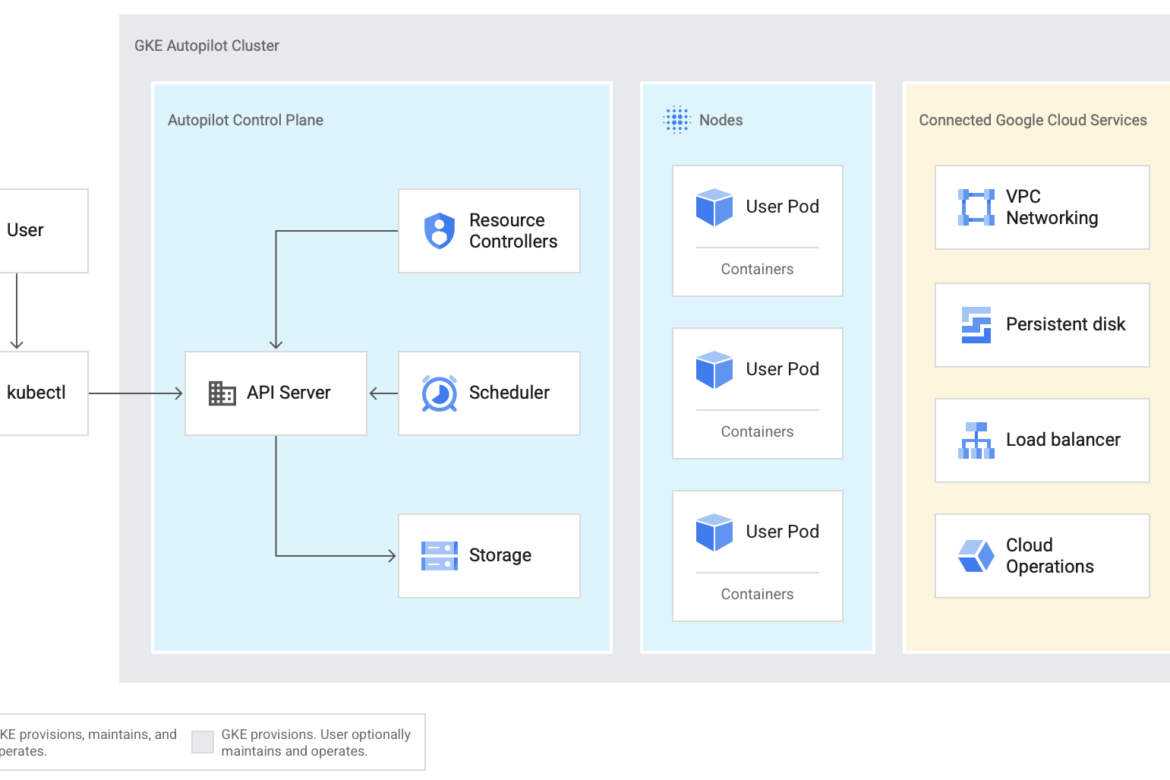Google Cloud at present introduced a brand new working mode for its Kubernetes Engine (GKE) that turns over the administration of a lot of the day-to-day operations of a container cluster to Google’s personal engineers and automatic instruments. With Autopilot, as the brand new mode is named, Google manages the entire Day 2 operations of managing these clusters and their nodes, all whereas implementing finest practices for working and securing them.
This new mode augments the present GKE expertise, which already managed a lot of the infrastructure of standing up a cluster. This ‘standard’ expertise, as Google Cloud now calls it, continues to be obtainable and permits customers to customise their configurations to their coronary heart’s content material and manually provision and handle their node infrastructure.
Drew Bradstock, the Group Product Manager for GKE, instructed me that the thought behind Autopilot was to convey collectively the entire instruments that Google already had for GKE and produce them along with its SRE groups who know find out how to run these clusters in manufacturing — and have lengthy performed so inside the corporate.
“Autopilot stitches together auto-scaling, auto-upgrades, maintenance, Day 2 operations and — just as importantly — does it in a hardened fashion,” Bradstock famous. “[…] What this has allowed our initial customers to do is very quickly offer a better environment for developers or dev and test, as well as production, because they can go from Day Zero and the end of that five-minute cluster creation time, and actually have Day 2 done as well.”
Image Credits: Google
From a developer’s perspective, nothing actually adjustments right here, however this new mode does unlock groups to focus on the precise workloads and fewer on managing Kubernetes clusters. With Autopilot, companies nonetheless get the advantages of Kubernetes, however with out the entire routine administration and upkeep work that comes with that. And that’s undoubtedly a pattern we’ve been seeing because the Kubernetes ecosystem has advanced. Few corporations, in spite of everything, see their potential to successfully handle Kubernetes as their actual aggressive differentiator.
All of that comes at a worth, after all, along with the usual GKE flat price of $zero.10 per hour and cluster (there’s additionally a free GKE tier that gives $74.40 in billing credit), plus extra charges for assets that your clusters and pods devour. Google provides a 99.95% SLA for the management aircraft of its Autopilot clusters and a 99.9% SLA for Autopilot pods in a number of zones.

Image Credits: Google
Autopilot for GKE joins a set of container-centric merchandise within the Google Cloud portfolio that additionally embrace Anthos for working in multi-cloud environments and Cloud Run, Google’s serverless providing. “[Autopilot] is really [about] bringing the automation aspects in GKE we have for running on Google Cloud, and bringing it all together in an easy-to-use package, so that if you’re newer to Kubernetes, or you’ve got a very large fleet, it drastically reduces the amount of time, operations and even compute you need to use,” Bradstock defined.
And whereas GKE is a key a part of Anthos, that service is extra about brining Google’s config administration, service mesh and different instruments to an enterprise’s personal information heart. Autopilot of GKE is, no less than for now, solely obtainable on Google Cloud.
“On the serverless side, Cloud Run is really, really great for an opinionated development experience,” Bradstock added. “So you can get going really fast if you want an app to be able to go from zero to 1000 and back to zero — and not worry about anything at all and have it managed entirely by Google. That’s highly valuable and ideal for a lot of development. Autopilot is more about simplifying the entire platform people work on when they want to leverage the Kubernetes ecosystem, be a lot more in control and have a whole bunch of apps running within one environment.”









